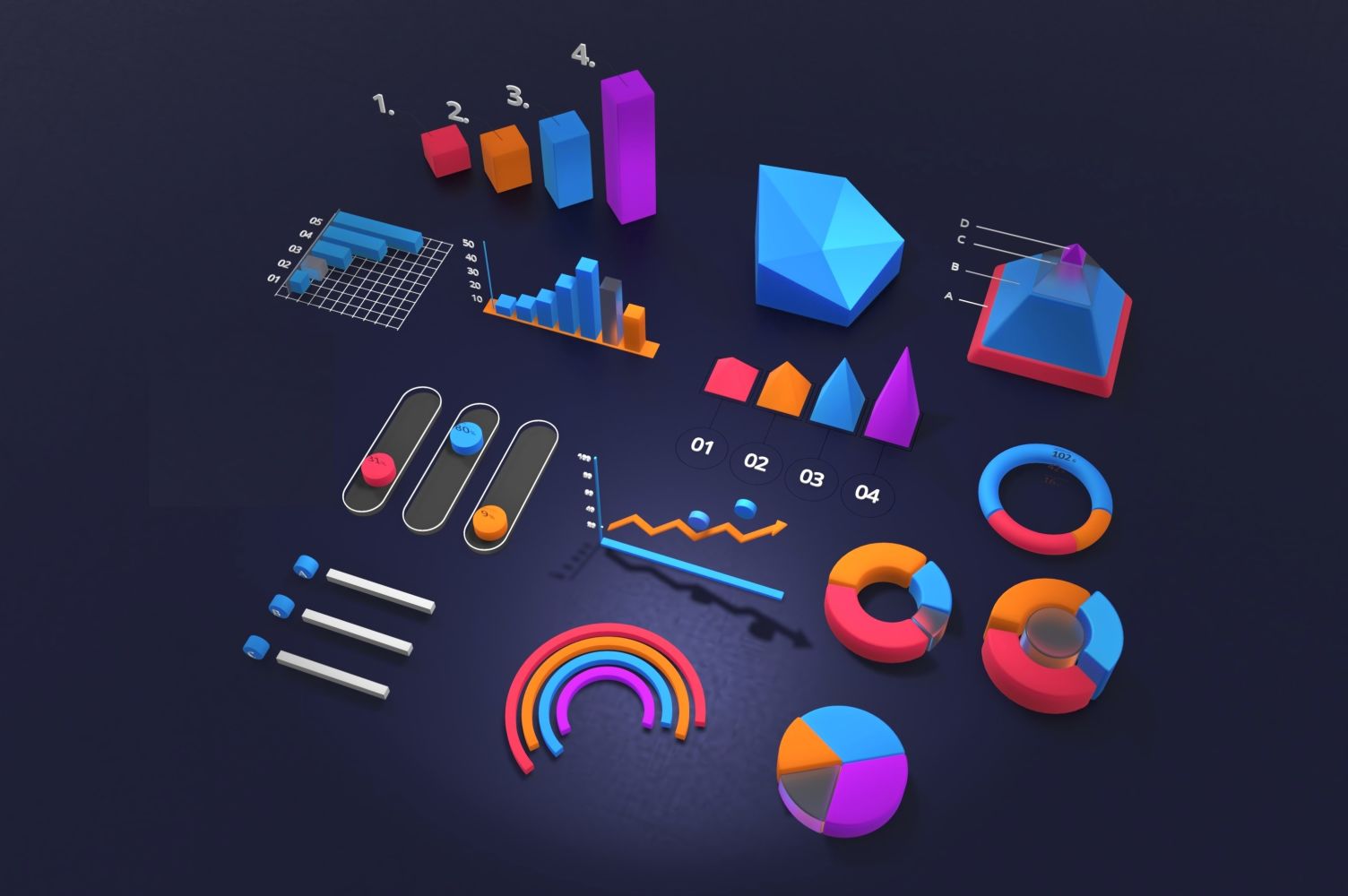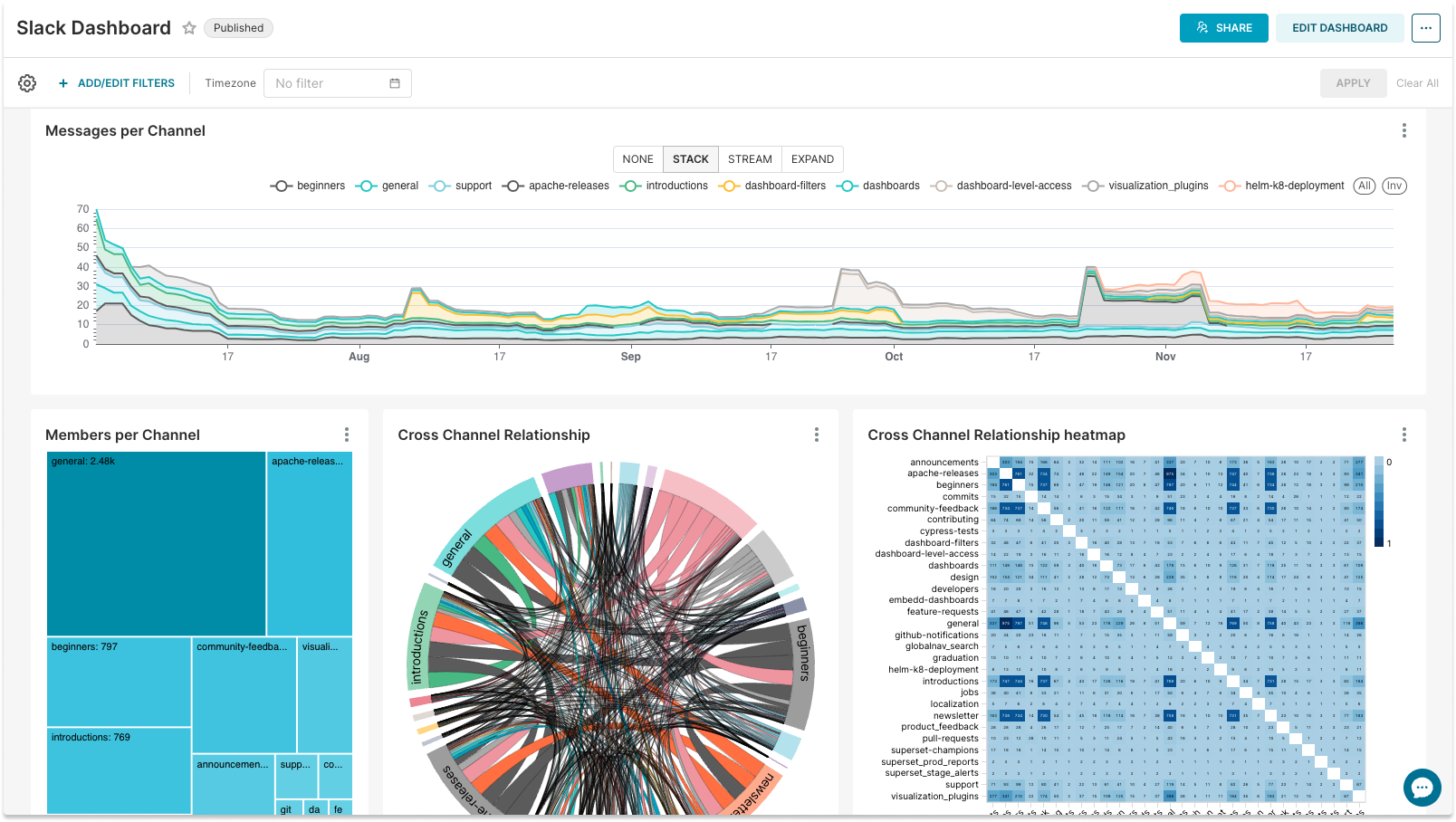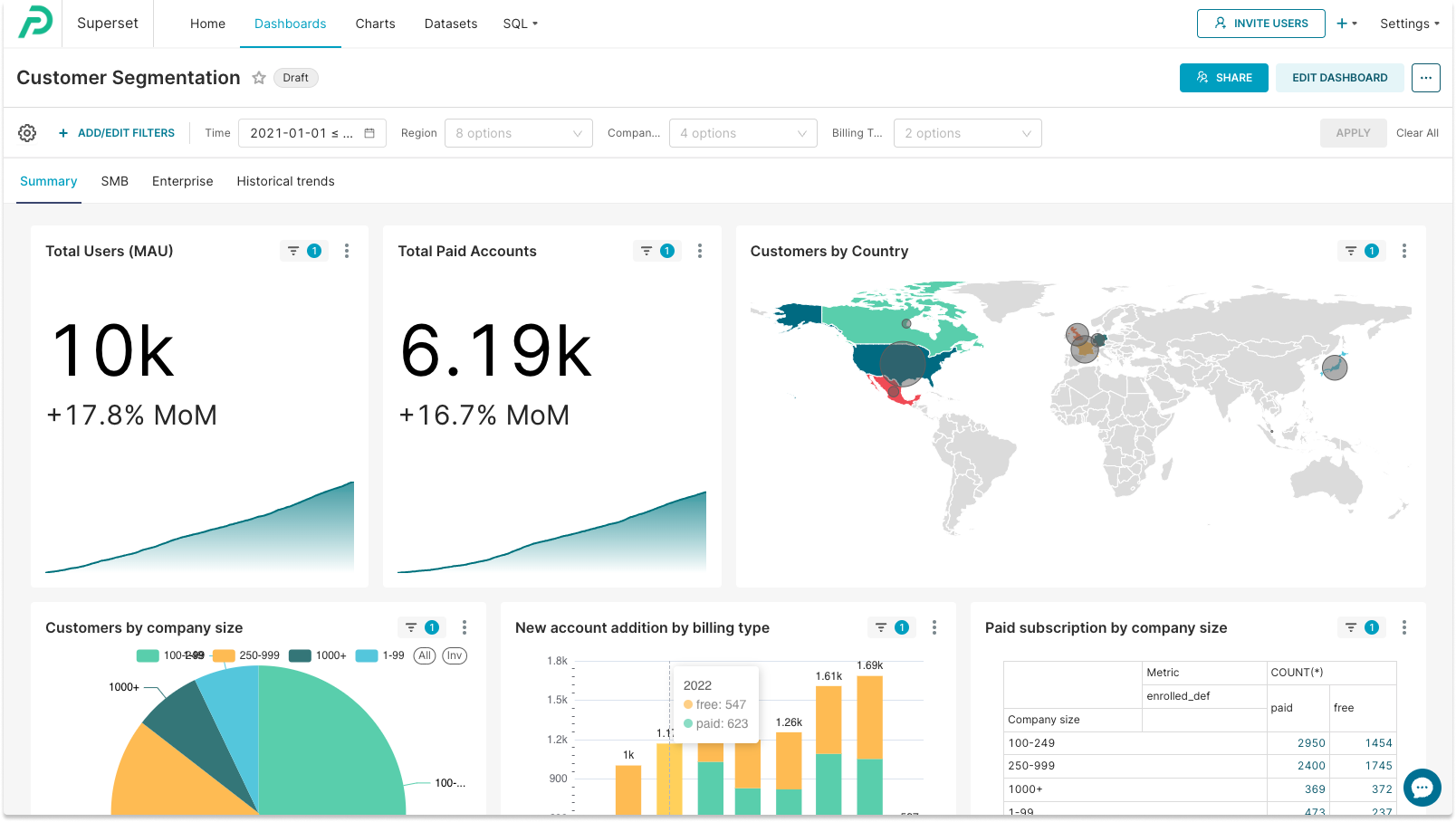
Business Intelligence Reporting
Introduction
Today’s businesses face an unprecedented challenge—navigating an ever-expanding ocean of data. Every click, every transaction, every engagement leaves a data footprint. And while this surge of information presents countless opportunities, organizations are often paralyzed by the sheer volume of it. This is where Business Intelligence reporting (BI reporting) strides in, offering a lifeline to businesses searching for clarity amidst the chaos. This comprehensive exploration into BI reporting will shed light on its definition, various forms, benefits, best practices, and how Preset is carving a niche in this domain.
What is Business Intelligence Reporting?
At its core, business intelligence tools allow you to create reports that use a technology-driven process to interpret raw data into meaningful, actionable business insights. This transformative approach aims to streamline data comprehension through systematic collection, integration, analysis, and presentation of business information. The ultimate goal? To facilitate strategic decision-making, offering businesses a competitive edge in the ever-evolving marketplace.
Delving into the types of BI reports uncovers a spectrum of tools, each designed to cater to diverse business needs:
- Self-service BI: A democratized approach where individuals, irrespective of their technical prowess, can generate reports tailored to their needs, freeing up data analysts and data engineers and promoting a data-driven culture across all departments of an organization.
- BI dashboards: Think of these as the cockpit of an airplane. Dashboards centralize the most critical metrics, offering a bird's-eye view, and ensuring quick and informed decisions.
- Embedded BI reports: These are seamlessly integrated into business applications, ensuring users don’t have to switch platforms to derive insights, enhancing efficiency and user experience.
- Mobile BI: With the world going mobile, BI tools haven't stayed behind. Mobile BI ensures decision-makers have access to insights on the go, ensuring agility in responses.
- Static BI: The traditional stalwarts, these are non-interactive reports, often used for standard monthly reviews or regulatory submissions.
The Benefits of BI Reporting
A BI reporting tool is the unsung hero in the modern business playbook. Beyond simplifying data management, BI reporting is instrumental in sculpting a company's roadmap to success. As we delve deeper, we realize its transformative potential:
- Improved Operational Efficiency: BI reporting highlights inefficiencies, streamlines processes, and optimizes resource allocation, leading to tangible cost savings.
- Versatile Applicability: From HR to supply chain, marketing to finance, BI reporting finds utility across the board, making it an indispensable tool.
- Data Utilization: It’s not enough to have data; one must harness it. BI reporting ensures every byte is analyzed, turning potential insights into actionable strategies.
- Customer Insights and Predictive Analysis: Ever wondered what your customers might want next? BI reporting, with its predictive analytics, offers a glimpse into the future, ensuring businesses always stay one step ahead.
- Operational Optimization and Forecasting: Whether it's anticipating seasonal demand surges or understanding market shifts, BI reporting provides businesses the foresight to adapt and thrive.
- Cost Management: By highlighting wastages, inefficiencies, and redundancies, BI reporting is a guardian of the bottom line.
- Informed Strategic Decision-Making: No more relying on gut feelings or anecdotal evidence. Every decision is backed by data analysis, minimizing risks and maximizing outcomes.
How to Create an Effective BI Report
Creating a business intelligence report that resonates and drives action is an art. It's not merely about presenting data but doing so in a manner that is comprehensible, compelling, and convincing. Let’s dissect the best practices to master this:
- Understand Your Audience: Different stakeholders require different insights. A marketing head's requirements will vary vastly from those of a CFO. Tailor your reports to resonate with your audience.
- Prepare Your Data: Garbage in, garbage out. Ensure the data is cleaned, relevant, and updated. Regular audits can avoid potential pitfalls.
- Build Flexibility and Scalability: Today's insights might not serve tomorrow’s challenges. Ensure your BI tools are adaptable, catering to evolving business needs.
- Govern Your Data: In an age of data breaches, ensuring data integrity and security is paramount. Regular checks and robust protocols are non-negotiable.
- Craft Compelling Data Stories: Numbers can be numbing. Weave them into compelling narratives, making the insights relatable and easy to digest.
- Continuously Iterate: The business landscape is ever-evolving, and so should your reports. Regular feedback loops and iterations ensure continued relevance.
- Promote Data Literacy: A report is only as good as its interpretation. Invest in training, ensuring that everyone on your team from business users to data experts can comprehend and act on the insights.
- Choose Relevant Metrics: Not all numbers matter. Focus on metrics that align with business goals and your story, avoiding data overload.
- Master Data Visualization: A picture speaks a thousand numbers. Use graphs, charts, and infographics to make your data visually appealing and intuitive.
BI Reporting Dashboard Examples
There are a number of different data visualization dashboard options available, allowing to visualize data from different data sources and industries. These dashboards not only help users harness the power of their data but also enable them to make informed decisions, identify trends, and uncover hidden patterns. Let’s look at some examples of BI reporting dashboards examples:
Product Engagement Dashboard
The product engagement dashboard allows organizations to be on top of their product data. There are a variety of metrics that can be tracked. In the example below the dashboard shows data on product engagement using product teams' data, such as Monthly and Weekly Active Users (MAU, WAU), Monthly and Weekly Active Teams (MA Teams, WA Teams), number of Monthly and Weekly Active Dashboards, and number of dashboard visits within the last 7 and 28 days.

Sales Dashboard
Sales and revenue metrics are critical for companies to be able to ensure growth. This example dashboard provides insight into the business operations of vehicle manufacturers. Tracking sales metrics in BI reporting tools allows sales professionals and other stakeholders to see and analyze important data in a timely manner.

Online Community Health Dashboard
With a growing number of online communities the Community Health Dashboards become very popular. By tracking the metrics of the community, community managers can find valuable insights for the community's growth and development. The dashboard example below gives a view of the overall community health and activity, such as the total number of members, where the members are located, what channels are the most popular, and other insightful information.

Customer Segmentation Dashboard
Businesses can create an interactive dashboard to look at their customers' segmentation by different criteria, such as company size, location, subscription types, and more.

Marketing Dashboard
Having a live visualization of marketing activity and results is crucial for any organization. Marketing professionals track a vast majority of data from different sources: marketing websites, CRM, social media, campaign tools - just to name a few. The example below shows website visits and page views for a marketing website - one of the many BI reporting dashboards that marketers use for planning and analyzing their marketing strategy and everyday activities.

Cutting Edge BI Reporting with Preset
Preset is an open, cost-effective business intelligence tool for modern teams, that makes self-serve analytics faster, easier, and more approachable for every user in your organization.
Amidst various BI solutions, Preset emerges as a frontrunner, distinguished by its innovative offerings. Based on open-source Apache Superset, Preset extends beyond traditional service parameters, exemplifying customizability, modern visualizations, no-code operations, self-service analytics, and expert support.
What sets Preset apart is its commitment to user empowerment. Through its intuitive platform, it democratizes data, allowing users at all levels to participate in the data dialogue, fostering a holistic, inclusive approach to business strategy formulation.
With its no-code visualizations, Preset reduces the technical entry barrier, enabling professionals to focus on insights rather than wrestling with complicated software operations. This ease of use, combined with expert, reliable support, makes Preset the ideal partner in your BI reporting journey.
Ready to transform your raw data into actionable insights with business intelligence? Create your free Preset account to start your journey today.